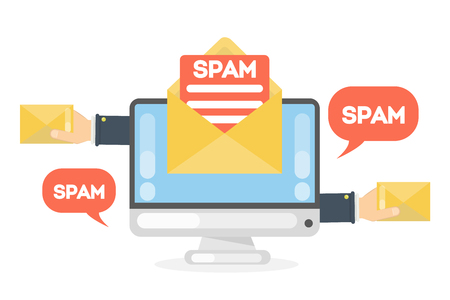Blog
Five limitations with serving ads in email
 With the rise of the internet, it has become easier than ever to quickly and affordably reach a lot of people for the purposes of marketing. Email marketing was one of the very early methods of getting your message out to the masses. It is still one of the most affordable and common ways for businesses to keep their customers in the loop, whilst also potentially making some money from ads contained within newsletters. While this is indeed a good way to make some extra money, there are some limitations with ad serving in emails, so let’s take a closer look at those issues.
With the rise of the internet, it has become easier than ever to quickly and affordably reach a lot of people for the purposes of marketing. Email marketing was one of the very early methods of getting your message out to the masses. It is still one of the most affordable and common ways for businesses to keep their customers in the loop, whilst also potentially making some money from ads contained within newsletters. While this is indeed a good way to make some extra money, there are some limitations with ad serving in emails, so let’s take a closer look at those issues.
Ad format limitations
With a website, you are essentially free to add any sort of advertising that works best for your specific purposes. This is not the case with email, as there are simply some formats that do not translate well to that medium. For example, JavaScript and Iframe are not supported by most email viewing software. If these are the types of ads that you usually serve, email may not be a good solution for you. Standard banner image ads and text-link ads are popular ad formats in email.No cookie support
You can save a lot of time when surfing the internet thanks to cookies. Your information is essentially saved and stored on the websites that you have visited in the past, which is a great time saver. However, there is very little to no cookie support in email, which can make advertising more difficult because certain ad features do not work, such as cookie-dependent frequency capping. If you only get paid for each unique view of an ad, you will want to be able to cap how frequently each visitor sees said ad, which, because of the absence of cookies, becomes impossible in email ads.Email proxy servers
One of the things that advertisers often do when placing ads is ensuring that they are geo-targeted to a specific audience, which is usually the location of the viewer’s IP address. However, when Google fetches ads for an email, the requests are made from Google’s image proxy servers with Google’s IP addresses. Thus, this setup hide the actual IP addresses of the end-users. This is a privacy feature of Gmail. It makes geo-targeting ads to Gmail users ineffective and inaccurate, which can lead to a lower click-through and conversion rate.Expired ads
If you are going to place ads in email, then you want to be sure that they are fresh and up to date. However, if this scenario is not considered or set up properly, older and archived emails may still request ads that might have already expired or which lead to landing page URLs that no longer exist. That issue can end up being a poor reflection of you, as it appears as though you are not staying on top of the ads that you served.Spam filter
There are certain keywords and phrase that email software views as being spam-related, and that can lead to delivery problems with your emails. Thus, when you place text ads contained within your newsletter, make sure you check the ad copy for these spammy keywords. Depending on the email client, it may be that the emails you send end up in the spam folder of your recipients, which is a place that people seldom venture into other than to delete things out every now and again.Posted in Email Ad Server December 01, 2017
Related
- What are the pros and cons of advertising via email newsletters?
"One of the great things about advertising is that there are now multiple ways of reaching your target audience. Traditional marketing methods now sit side by side with online forms of advertising, with the latter proving to be very popular with small businesses, mostly due to the lower costs associated with running an online campaign. " More
- Top 5 things to avoid with email ad serving
"With so many new marketing methods available nowadays, there are some who believe that ad serving via email is somewhat old school. While that may certainly appear to be the case at first glance, the reality is that email advertising is as popular and effective as ever. " More
- What you need to know about email ad serving?
"Email is still a very viable way of reaching your target audience, but it’s a method of marketing that has to be approached very carefully. Where things can get tricky is if you are juggling ads from different advertisers, you might end up blasting our emails containing ads that are only relevant to very few people on your mailing list. " More
Featured
- Ad serving opportunities for different publisher types (part 2)
- Ad serving opportunities for different publisher types
Popular
- Ad serving opportunities for different publisher types (part 2)
- How to design a good ad banner (part 2)
- Opportunities and challenges of video ad serving during live events
- How to design a good ad banner
- Ad serving opportunities for different publisher types
- What to do when your website is showing a wrong ad or is not showing an expected ad? (part 2)